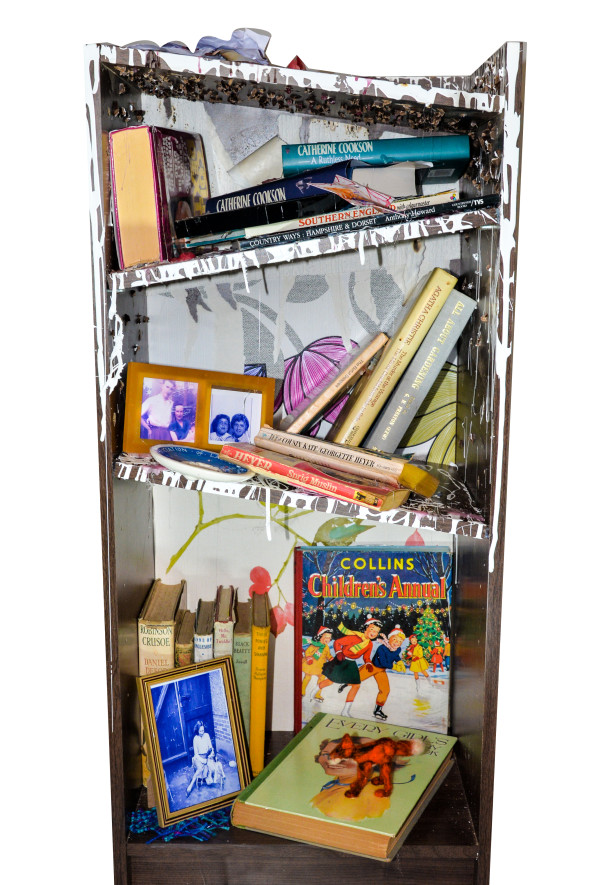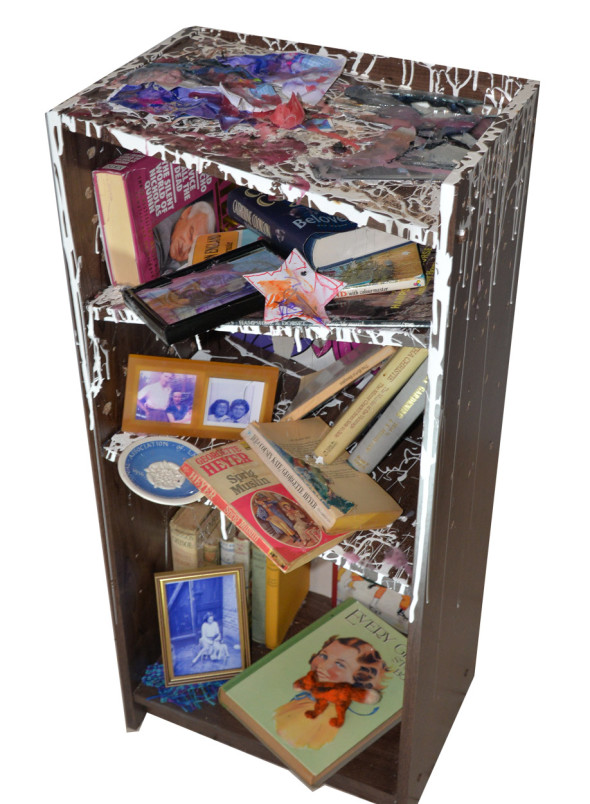These Art Not My Memories: A Visual Journey Through the Dementia Bookcase
Please note these are not my memories forms part of a much bigger installation that examines our relationship to illness and the fear and panic it can elicit.
THESE ARE NOT MY MEMORIES
A Visual Journey Through The Dementia Bookcase
Artist: Beth Davis-Hofbauer
Dr Gemma Jones used the excellent analogy of a dementia bookcase to explain how memory becomes fractured when experiencing dementia.
There are various interpretations of this idea. Two variations were told to me by Jane Ward a Dementia Champion and whose mother died of vascular dementia.
She suggested two bookcases: a strong, beautiful mahogany bookcase that stores emotional memory. This stays mostly intact during the disease’s progression.
The other is the dementia (memory) bookcase. This bookcase is cheap, flat pack furniture. Every shelf is a different time period, each holding memories for that time. The bottom shelf is childhood (and possibly very young adulthood).
As time moves on the bookcase gets moved many times. As it is flimsy and gets moved around constantly the selves begin to weaken over time; it gets dusty and mixed up; things start to fall off the shelves and get put back wrong.
Often the only shelf to remain intact is that bottom shelf. That first period of life. This is why we often seem at odds with those we know suffering from dementia and why they seem to not know who we are for the best part.
These Are Not My Memories is the visual encapsulation of this idea.
The top of the bookcase is crumpled photos of my dementia ridden Grandmother’s last year, stained with dust and wax. There is paint haphazardly dribbled everywhere to demonstrate the chaotic nature of these memories and there are holes everywhere (these are to symbolise the literal and metaphorical holes in the memory). From the inside of the bookcase their roughness resembles that of an exit wound after a bullet has torn through; this is illustrative of how dementia rips through our memories.
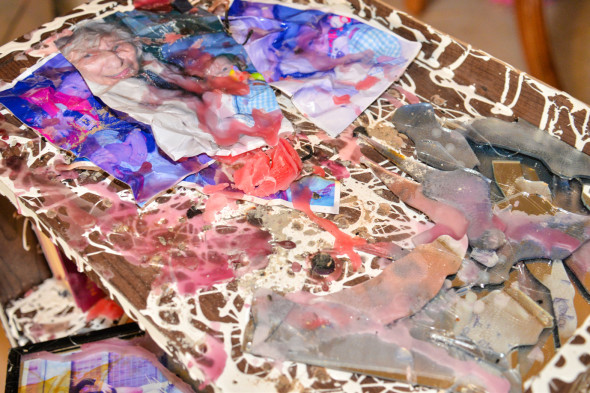
The next shelf refers to memories relating to the period 1980s and 1990s. The back of the bookcase is covered in embossed wallpaper that is typical of the era. However to demonstrate how the mind has deteriorated it is ripped and burnt at the edges.
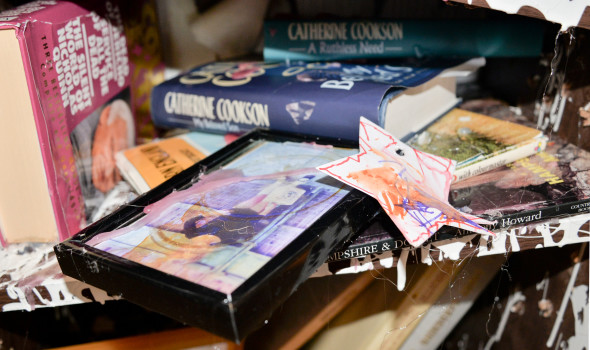
There are books from the period; a photo of me as a child but my face has been scratched out to represent the lack of complete understanding of who I am (as the disease progresses). The photo is on its side and covered in stains where tea cups have been mindlessly placed upon it; this is to show the lack of value placed on this item as the young child in it is a stranger to the advanced dementia sufferer.
The wax from the top shelf has dropped through and stained items. The paraphernalia is in a state of disarray, looking as if it has just been squashed back on the shelf and is in danger of falling out.
Like with the top shelf there are holes drilled at random, although there are fewer. The holes can be seen at the sides too.
The shelves are placed at random angles to demonstrate how memories get moved around and dislocated in their positioning.
The next shelf refers to the 1950s-70s. As with the shelf above there is wallpaper symbolic of the era. It is torn and in need of repair, although it is not burnt and as badly damaged. Again books from the era are used to illustrate this and the random paint splats that are represented on the above shelves. There are fewer holes on the side at this level as there are fewer holes in the memory.
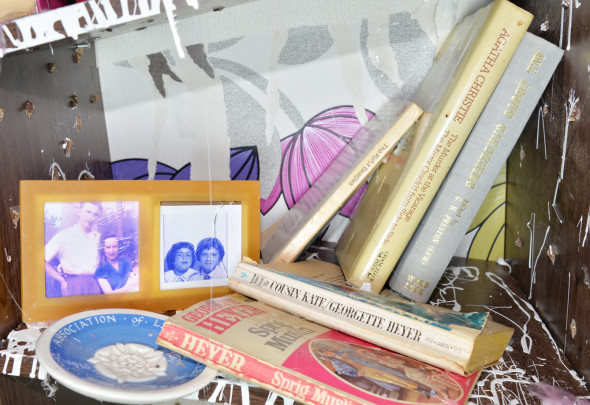
A knickknack from the 1970s is also included. This is to link to the importance we place on objects but how this is ultimately lost when we lose our memory.
Two photos are used of the young family and children. Like the photo of the granddaughter they are scratched and the glass is broken as memories over who they are have begun to fade.
The bottom and strongest shelf is the most pristine. There is little paint and the wallpaper, typical of the era is in perfect condition.
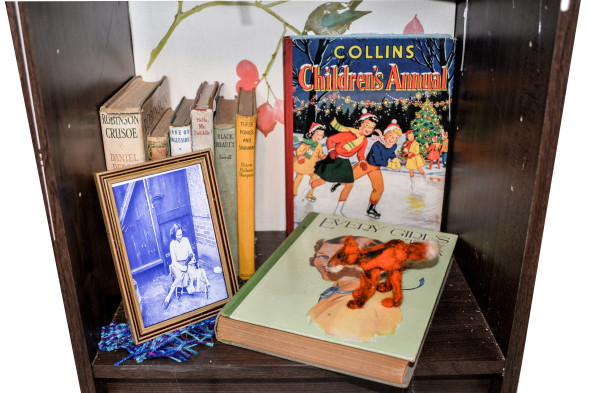
The books from 1926-1952 are stacked neatly. A handmade felted toy is stood atop a large book, indicative of a toy that may have been played with in the era. There is a handwoven little mat that could have been made by young person from the era. However it is loosely fraying at the edge, this is the one hint we having that something is amiss and close to unravelling. On top of this is a photo in perfect condition, in a perfect frame of the lady with dementia as a young girl playing with a dog. She in this state is something we can relate to.
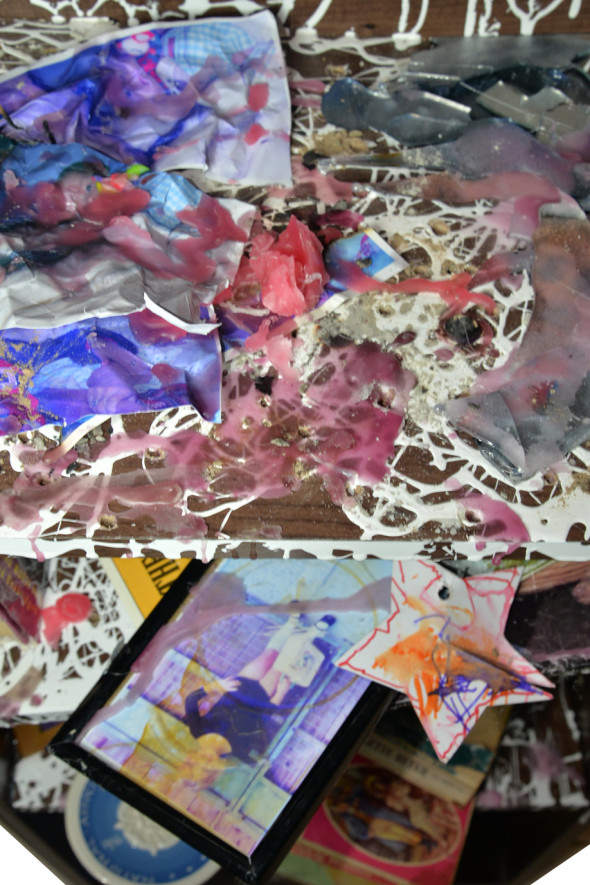
Through the bookcase we follow her journey from young girl entering womanhood to starting a family, grandchildren and then the final months. It humanises this cruel condition that works as a type of mental Benjamin Button, robbing us of our loved ones.
Although this lady is my Grandmother, these are not her things, it is a symbolic journey through memories and how the dementia bookcase can rob us all of those we hold dear.
